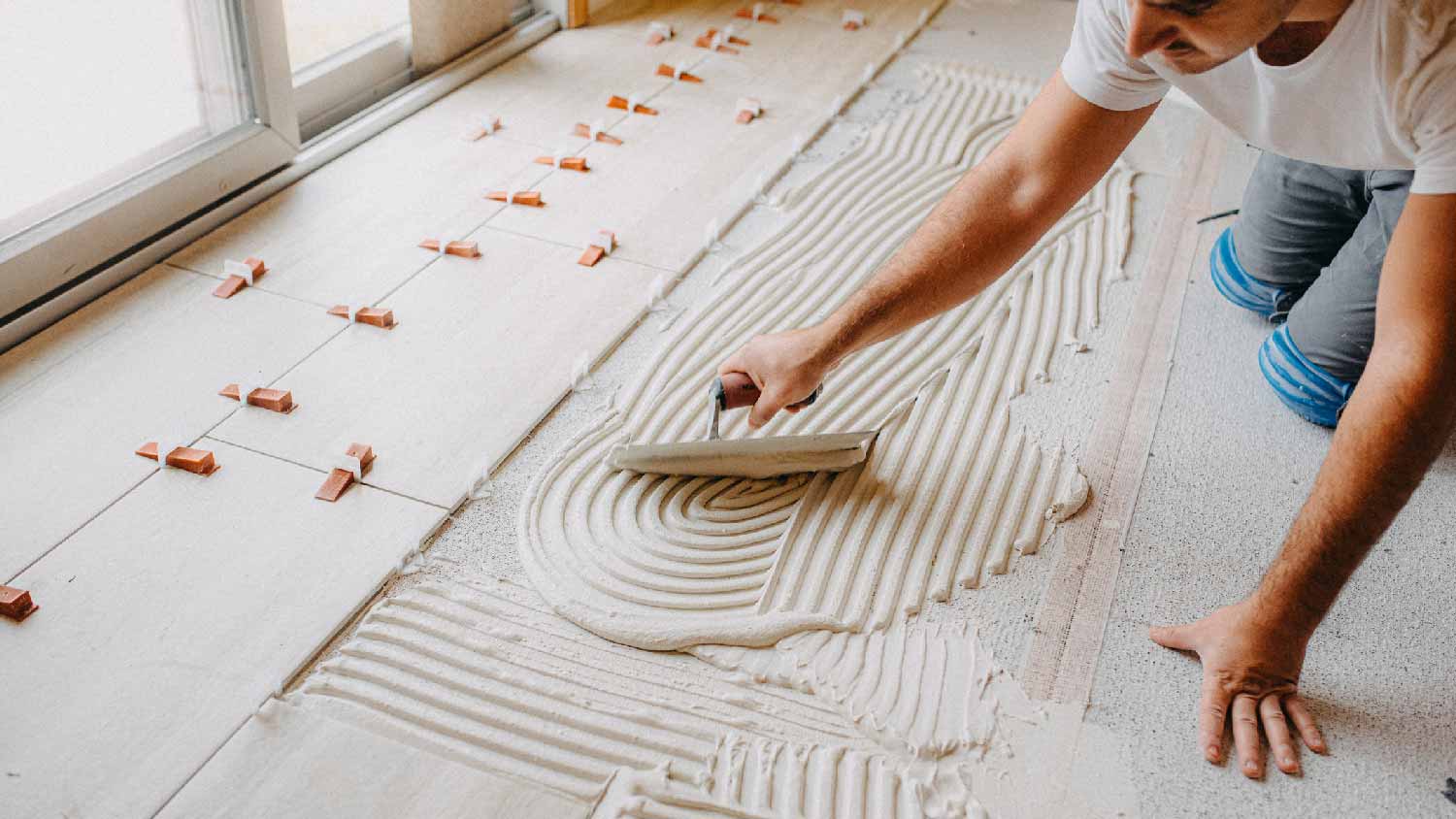.jpg?impolicy=leadImage)
Sealing your grout goes a long way toward extending its life span. This guide breaks down the cost factors for sealing grout, including size, materials, and labor.
Bring your shower back to life in a weekend with new grout


Tile is strong and durable, but grout is not. Even with the strongest materials and the best application, grout gets dirty, becomes unsightly, and even wears down over time. Learning how to regrout a shower will help you make your shower look as good as new, even if the tiling is aging too. Plus, regrouting your shower can help prevent water seepage and the resulting mold and rot in the walls. In this guide, we’ll explain how to regrout a shower like a pro in a single weekend.

Use a grout saw to remove as much of the old grout and caulk as you can. Start with the vertical joints and then move to the horizontal joints once you have a good starting point. Ideally, you’ll take out at least 1/8 inch of grout or at least half of the depth of the tiles.
Cut out any extra challenging areas with a utility knife, being careful not to scratch or crack any tiles (leading to another bathroom DIY project). Use a hand vacuum or shop vacuum to remove any excess dust and debris once you have the bulk of the grout removed.
Pour the desired amount of grout into your bucket. Then, following the manufacturer’s instructions, start with half the recommended amount of water. Mix and add water until you achieve the desired consistency (a thick paste).
Let the mixture sit for up to 10 minutes before application.

Holding a grout trowel at a 45-degree angle, spread the grout across the tile. Work in multiple directions and add extra pressure at joints to ensure the grout spreads evenly. Regrout the shower tiles at least three times during this step to make sure you fill all lines to the proper depth.
If your tiles have a beveled edge, drag a pencil eraser along the joint once the grout has started to dry to leave a thinner joint and expose the textured tile edges.
Holding the trowel at a 90-degree angle on its edge, scrape off the excess grout from the tiles. When your trowel is full of grout, wipe it into your grout bucket before continuing.
Work quickly at this point, or the grout will start setting and cure on top of your tiles. Depending on your home's humidity and temperature level, you have anywhere from five to 20 minutes to complete this step.

Before starting this step, check that your grout is firm to the touch and doesn’t stick to your fingers.
To clean your shower’s surface, dampen a sponge and wring it out completely. Wipe away excess grout with short motions, taking care to rinse and wring out the sponge often. It may be helpful to have two buckets of water, one with water for cleaning off the dirty sponge and one with fresh water to soak the sponge before you continue.
For the best shower appearance, take your time. The more careful you are during this stage, the less likely you will be surprised by dried (nearly impossible to get off) grout later on.
Tile and grout alone aren’t enough to stop moisture from getting into your walls. Caulk is much more flexible than grout and is better suited to bond different materials like tile and a porcelain tub. With a waterproof silicone caulk protecting these joints, water is far less likely to get behind your walls.
First, if there’s old caulk on the edge of the tub, use your utility knife to remove it before refreshing the caulk around the tub.
To caulk your shower, run 100% silicone caulk along the joints where the tile and your tub meet, making sure to overfill the joint. Do the same for the 90-degree angles between walls and between walls and the ceiling, if your ceiling is also tiled.
As you lay down the bead of caulk, wet your finger and drag it across the excess caulk to smooth the line. You can also use a plastic putty knife designed for smoothing out caulk in corners.

Let the grout and silicone caulk cure for 48 hours. Once cured, check for any grout haze (powdery film) left on the shower tiles. Take a cloth and simply wipe this off before sealing the grout.
Then, use a toothbrush to run a sealant along the grout. This step will help extend the lifetime of your grout and add an extra layer of protection from water and moisture.
Shower grout usually lasts for between eight and ten years before you need to replace it, so if your last bathroom remodel was about a decade ago, it might be a good time to regrout the tiles. Even if you installed new tile or regrouted more recently, there are some signs that indicate a refresh might be ideal:
You notice the grout crumbling or missing entirely
You find cracks in the grout that reveal the wall behind it
The grout is severely stained or discolored, and cleaning the grout doesn’t help
You notice water damage around where the grout sits
Tiles around damaged grout are falling off or shifting
You notice moldy or musty odors in your shower that won’t go away with cleaning
In any of these cases, removing the existing grout and replacing it with fresh grout is probably a good idea.

Finding the perfect match for your grout can be difficult. If possible, look for an opportunity to salvage a chunk of the existing grout to take to a store to find a match, like underneath a baseboard or in an area you plan to regrout already. If you’re unable to find a match, you might need to remove all of the grout in your shower and plan to replace it.
For larger grout lines (anything over 1/8-inch wide), choose a more durable sanded grout to prevent cracking. For smaller grout lines, you can use unsanded grout.
If you’re regrouting a shower floor, a sanded grout is a better option, as it will stand up better to foot traffic.
Regrouting your shower takes a lot of time and effort. It’s a better use of your money and time to hire a pro. Tilers charge between $10 and $25 per square foot for the cost to regrout a shower, plus the cost of the materials. A grout repair pro near you can easily get a good seal with grout and caulk, meaning a lower risk of water damage and other grout issues in the future.
From average costs to expert advice, get all the answers you need to get your job done.
.jpg?impolicy=leadImage)
Sealing your grout goes a long way toward extending its life span. This guide breaks down the cost factors for sealing grout, including size, materials, and labor.

Discover the cost to regrout shower, including average prices, key cost factors, and tips to help you budget for a fresh, watertight shower.

Whether it’s on your floor, walls, or shower, ceramic tile can add style to your space. So, how much does ceramic tile installation cost? Let’s break it down.

Can you tile over tile? Yes—if you prep right. Learn how to prep, choose adhesive, and avoid common mistakes for a successful tile-over-tile project.

Discover the key differences between acrylic versus silicone caulk to choose the right sealant for your next DIY project.

Calculating how much thinset you need involves multiple steps. Use this guide to determine exactly how much of the bonding material you’ll need.